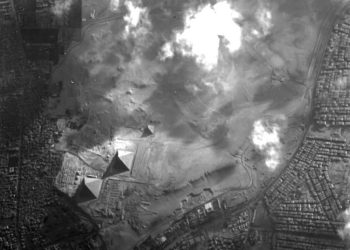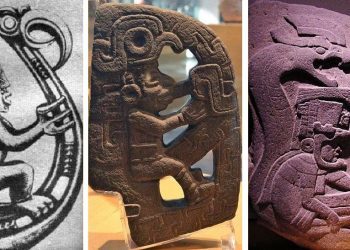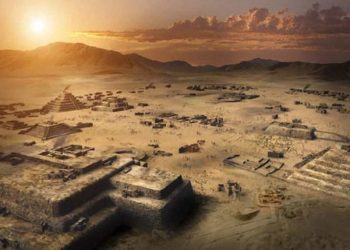One of the greatest and most amazing structures ever built by human hands lies n the Giza plateau in modern-day Egypt. There, thousands of years ago, more precisely some 4,500 years ago, the ancient Egyptians completed what would become the most impressive monument in the history of man. The Great Pyramid of Giza was commissioned by Pharaoh Khufu and built by Vizier Hemiunu, who oversaw the entire building process.
The builders transported massive blocks of stone from quarries more than 800 kilometers from Giza. Somehow, they moved the blocks of stone where they wanted them to be and proceeded to build the pyramid, which supposedly took around twenty years to complete. Scholars who have actively studied the pyramids and their surroundings have calculated that the ancient Egyptians used around 2.3 million stones weighing, on average, 3 tons to build the Great Pyramid. Impressive, to say the least. But what makes the Great Pyramid of Giza an out-of-place structure?
Out-of-place-strcutures?
Many of you may have heard about an out-of-place artifact (OOPArt. For those who have not, an OOPart is an artifact of historical, archaeological, or paleontological interest found in an unusual context that challenges conventional historical chronology by being either “too advanced” for the level of civilization that existed at the time or showing “human presence” before humans were known to exist.
Many such artifacts have been ‘cataloged’ throughout the years. Many OOParts have been found on Earth. Some of the most famous artifacts are the Baghdad Battery, the Antikythera mechanism, the Piri Reis map, and the Stone Spheres of Costa Rica, among many others. So, what does this have to do with the Great Pyramid of Giza, and why is it an out-of-place structure?
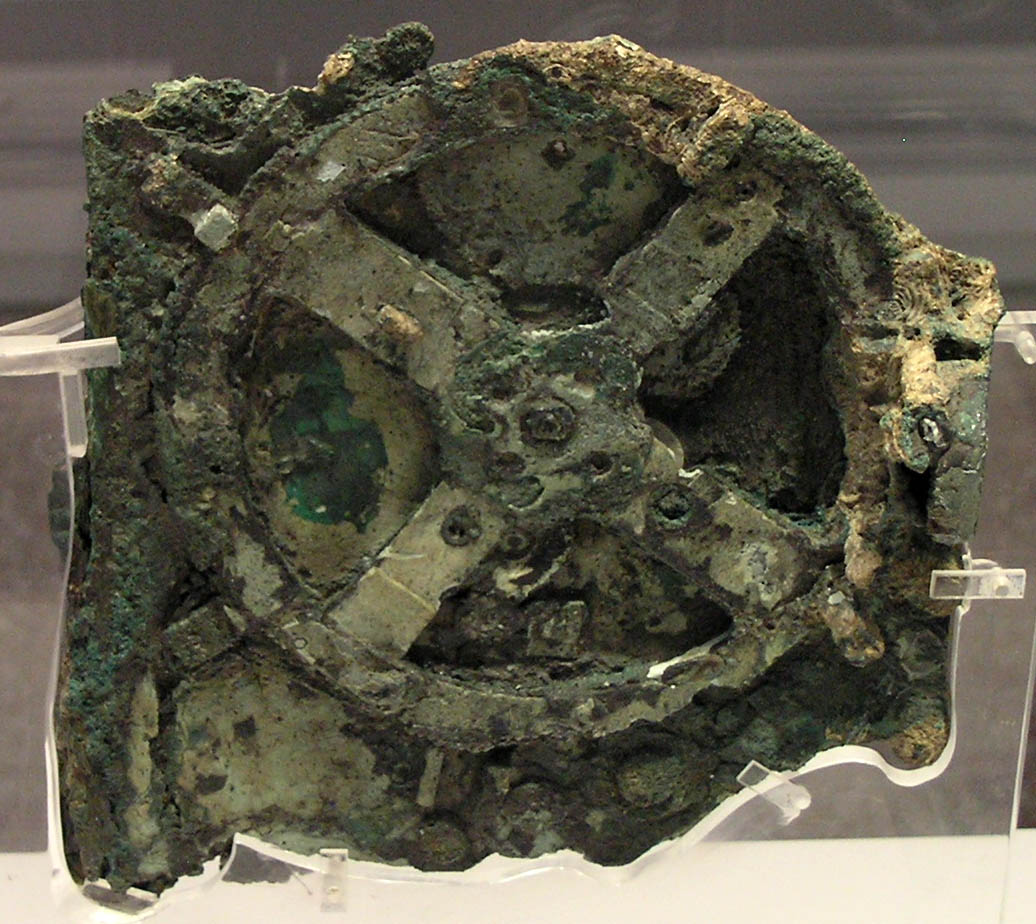
Scholars argue that most purported OOPArts, not hoaxes, result from mistaken interpretation, wishful thinking, or a mistaken belief that a particular culture could not have created an artifact or technology due to a lack of knowledge or materials.
Nonetheless, they seem to attract people’s attention. But what about structures on Earth? What about out-of-place buildings?? Suppose there are such things as out-of-place artifacts. Why can’t we look for out-of-place buildings, monuments, and structures that ‘hint’ at being either ‘challenging’ for historical chronology or too advanced for a civilization that existed at that period?
The Great Pyramid, an Out-Of-Place Structure
If we were to adopt such terminology and apply it to the Great Pyramid of Giza, then this ancient structure is definitely out of place. Here’s why. You have to admit that building the Great Pyramid of Giza is a once-in-a-lifetime achievement.
1) Precision Building
But building it and making it one of the most precise structures on Earth is just mind-boggling. Experts have determined that the Great Pyramid of Giza, upon completion, the Great Pyramid of Giza was located at the exact center of the Earth’s landmass. But that’s not all. The Great Pyramid of Giza was the most accurately aligned structure on the planet’s surface, facing true north with only 3/60th of a degree of error.
When we talk about precision, we can’t help but mention that the Great Pyramid of Giza is the only known eight-sided pyramid on the planet’s surface. The four faces of the Great Pyramid are slightly concave, making it the only pyramid to have been built this way. This means that not only did the ancient builders erect one of the most precisely oriented buildings on Earth, but they also built one having a volume of 2,583,283 cubic meters.
2) Energy Building
The Great Pyramid of Giza is not just any kind of pyramid. Yes, it is special due to its orientation and size, but it becomes even more magnificent when you consider that the pyramid can focus electromagnetic energy.
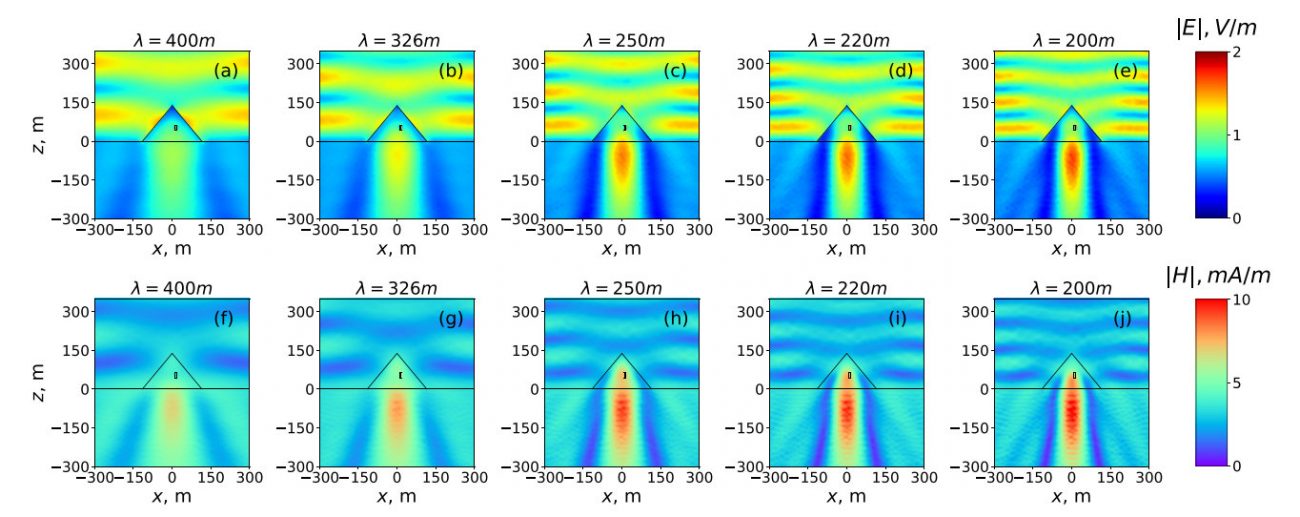
By methods of theoretical physics, scientists investigated the electromagnetic response of the Great Pyramid to radio waves. They found that the pyramid was built to focus electromagnetic energy and created a model of its resonant electromagnetic response.
Science Alert explains that “electromagnetic radiation, including visible light, radio waves, and microwaves, is radiating waves of oscillating electric and magnetic fields, and it’s all around us all the time.”
3) Not a Tomb
When you take into consideration that the builders of the Great Pyramid made sure to erect one of the most precisely aligned structures on the planet, one of the largest structures man has ever seen, and one of the most advanced buildings erected thousands of years ago, you have to wonder what the purpose of such a monument was?
Was the Great Pyramid of Giza built as a tomb to house the Pharaoh’s mummified remains? If so, why aren’t there any inscriptions inside the pyramid telling the Pharaoh’s story and his life? Why aren’t there any hieroglyphs and depictions of the Pharaoh on his journey to the afterlife?
After all, plenty of tombs have been excavated from ancient Egypt, demonstrating how creative the ancient Egyptians were when they built and designed tombs for royalty. The Great Pyramid of Giza lacks all of that. Doesn’t that bother you? Furthermore, there has never been a mummy recovered from the pyramid. As explained in previous articles, the mummified remains of King Khufu have never been found and are presumed to have been stolen from the Great Pyramid. But that’s just a theory.
His mummified remains may very well remain hidden in a burial chamber in a different part of Egypt. But not only is the mummy missing from the Great Pyramid of Giza. Archeologists have not managed to find the mummies of Khafre and Menakure as well. But more about the true purpose of the pyramid(s) can be found by looking at writings penned down by authors in antiquity. One such example is the work of first-century BC historian Diodorus Siculus, who writes:
“The kings designed these pyramids for their sepulchers, yet it happened that their remains were not here deposited.”
“Describing the Great Pyramids and the hatred their builders supposedly attracted to themselves, Diodorus follows the tradition of Herodotus; he adds, however, that their bodies were never buried in them, but rather that the rulers commanded that their bodies be placed in a secure place that was kept secret.” (C. Zivie-Coche 2002 (1997): 102).
Conclusions
When you read between the lines and look at the pyramid from a neutral and natural point of view, one that is not influenced by history, mainstream interpretations, and dogma, you begin to see that the structure we see as a mystery today has been just that thousands of years ago.
In the past, the Great Pyramid of Giza has fascinated authors of antiquity just as it fascinates us today. It has caused admiration among experts in the past, just as it does today. But the opinions and views of ancient times were not as influenced by external factors as they are today. Imagine that before scientists found that Giza’s pyramid could focus electromagnetic energy, you walked into a meeting of Egyptologists and said that the Great Pyramid was capable of just that.
What do you think their reactions would have been? Would they have embraced your ideas and theories? Or would they hey have called you a lunatic? Most likely, the latter. When you finally come to understand that the more we learn about the pyramid means, the less we understand its complexity, you will then begin to open up to the countless mysteries surrounding this structure and start understanding that the Great Pyramid of Giza is more than just a massive tomb made out of millions of rocks.
Have something to add? Visit Curiosmos on Facebook. Join the discussion in our mobile Telegram group.






